NANA I KE KUMU
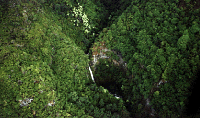
Ka`apahu, Maui
'Look to the Source'
By Charles Kauluwehi Maxwell Sr.
("Uncle Charlie")
Hawaiian Cultural Specialist, Author, Lecturer & Civil Rights Leader
Published in Maui Inc. Magazine
The saying "Nana I Ke Kumu" (Look to the Source), was used often by our ancestors as a means of educating the youth to seek answers from the elderly people around them that had the answers to many of their questions. It also meant that one must study nature itself with all its wisdom that is portrayed in the forest and streams, the ocean with all its life and the air that keeps it alive.
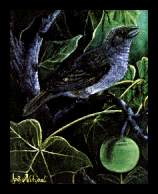 |
The ancient Hawaiian possessed a vast knowledge of the environment and knew that his very existence depended on its care and that the knowledge of its protection would have to be passed down to the future generations. Education was one of the most important functions of the early Hawaiians, as it was the means of survival. |
| Whenever a child was born, they would be watched closely to see what natural talents the child possessed. They would then encourage the child and would seek established scholars with the child's interest who, after a period of many years, would bestow on the student his knowledge. Because the Hawaiian culture was not written, the oral history was passed from one generation to the other by this method of apprenticeship. (David Malo, Hawaiian Antiquities). | 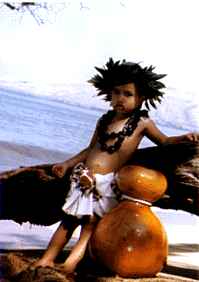 learning the basics in hula |
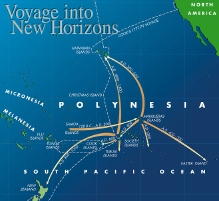 Click for larger version (Map of early Polynesian migration appears courtesy of Aloha from Hawaii - Mahalo!) |
One must realize that the ancient hawaiian must have possessed a vast
knowledge of his surroundings because of his accomplishments. When
the western man thought that the world was flat, the Hawaiian sailed thousands of miles between Aotearoa (New Zealand) in the west, Rapanui (Easter Island)
to the East and to Hawai`i, the third extremity, North of the Equator in
the vicinity of the Tropic of Cancer. These 3 groups of islands are known
as the Polynesian Triangle. With only the stars as their guide, they came
in double hulled canoes, with animals and plants that would feed them, women
of miles between Aotearoa (New Zealand) in the west, Rapanui (Easter Island)
to the East and to Hawai`i, the third extremity, North of the Equator in
the vicinity of the Tropic of Cancer. These 3 groups of islands are known
as the Polynesian Triangle. With only the stars as their guide, they came
in double hulled canoes, with animals and plants that would feed them, women and children to populate this new land, the gods and goddesses to take care
of their spiritual needs and a strong desire to live on this new land called
Hawai`i.
and children to populate this new land, the gods and goddesses to take care
of their spiritual needs and a strong desire to live on this new land called
Hawai`i. |
Upon arriving on these shores they found that these islands looked very similar to the land that they came from and the island of Maui was shaped like the island of Tahiti, except upside down, so an Ahu Pua`a (land division) was named Tahiti Nui (pronounced today Kahikinui), located on the south-Western side of Maui.
The islands possessed fertile volcanic soil, verdant valleys and numerous sources of fresh water. The ocean and streams contain an abundance of food. With skills learned from past generations, they fashioned their homes, made clothes, built temples, carved canoes, practiced aqua-culture, farmed and populated all the major islands. In the late seventeen hundreds, Capt. Vancouver upon sailing past these islands commented on how "barren and desolate" these islands were.
Burials that have been recently found indicate that the first migration arrived in Hawai`i between the 3rd and the 6th century. There were several migrations up until the 12th and 13th century. For 1300 years the ancient Hawaiian lived on these islands literally undisturbed by outside influence. During this period, their community flourished and every so many hundred years, migrations were made to Hawai`i which brought "new blood" that strengthened the dominance and stature of the ALI`I (royal class) who were the rulers of Hawai`i.
When Capt. James Cook arrived in 1778. There were a 400 to 500 thousand people living on the major islands of Hawai`i, (Alstair Mclean, Capt. Cook Journals). Some other accounts even has the estimated population at 900 thousand. In his journals, Capt. Cook comments on the accomplishments the hawaiians achieved with the land and their lifestyle in such a harsh environment with very "crude and primitive" tools. If he would have only taken the time to find out that the Hawaiian people at that time were even far advanced in the art of healing with herbs, prayers and rituals that even today astound modern medical researchers. Hawaiian's knowledge of the human body and its functions far surpass that of today's native people.
Because they were part of the eco-system, the Hawaiians knew that their continued existence depended wholly on the proper management of the environment. Their elders had taught them from a young age that whatever was taken from the earth, a gift had to be given in return. That whatever was taken from the earth, a gift had to be given in return. That whatever is harvested from the mountains and the ocean, only what is needed should be taken. In the mountains, young trees should be planted whenever old ones were taken. Care should be taken not to pull the ferns from the roots so the more shoots could be harvested; the same when harvesting seaweed (limpit) from the ocean. When catching fish, the big fish with eggs should be returned to the ocean, and when picking limpets, (opihi), the large ones should be left back because these were the breeders and by doing so would insure their abundance. The early Hawaiians placed strict kapu (restrictions) periods on the catching of certain fish to give them a chance to repopulate.
If these practices were understood and maintained by the westerners that arrived here and others that lived here over the several hundred years, we in present day Hawaii would have a legacy to pass on to the next generation.
Capt. Cook arrived in 1778 and the missionaries in 1820. These two events were the most devastating impacts to the Hawaiian race. Upon Cook's arrival, he and his men introduced common, cold and other diseases that ran rampant throughout the islands as the native shad no immunity to the new strain which was foreign to their environment. Cook's contact also brought the common mosquito in the stale water of the ships containers and other insects which was not part of the pristine Hawaiian environment.
Hawaiian gods that the people were accustomed to for hundreds of years were being defied by the newcomers. The rules as it applied to the land and sea were not being followed by the foreigners, yet they were not punished by the Kings. Finally just before the arrival of the Missionaries, the Hawaiians defied their gods and when the missionaries arrived, they were ready for religion.
When the missionaries arrived, they found that the population of Hawaii had been depleted by hundreds of thousands from when Cook arrived. The missionaries made serious attempts to treat the ill and save the souls of "these heathens". Like Capt. Cook, they failed to realize that the Native Hawaiian culture was the key to their preservation and survival and without it, they were lost. Their attempts of "saving" the native people was to change the way they dressed, altered their family structure, change their language and stop their "pagan rituals", which they called "scantly clad hula hula dancers". In a matter of 30 years, they made the native Hawaiian into their image, but not their equals.
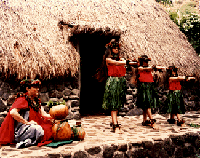 It
was a good thing that hula and other aspects of the culture went underground
to emerge at a later date. It is also amazing that we have remnants of
our culture today, a legacy to our Kupuna who maintained the gift of our
oral tradition and the wisdom of passing on to the present generation.
Some of the missionaries found that it was more lucrative to get into politics
and became advisors to the Kings and Queens. With the word of Christianity
and a desire to gain wealth, majority of the missionaries and their ancestors
acquired great land holdings and in doing so accumulated great wealth.
Today, most of the land owners can trace their "humble beginnings"
to the first missionaries that came in 1820 to "save us".
It
was a good thing that hula and other aspects of the culture went underground
to emerge at a later date. It is also amazing that we have remnants of
our culture today, a legacy to our Kupuna who maintained the gift of our
oral tradition and the wisdom of passing on to the present generation.
Some of the missionaries found that it was more lucrative to get into politics
and became advisors to the Kings and Queens. With the word of Christianity
and a desire to gain wealth, majority of the missionaries and their ancestors
acquired great land holdings and in doing so accumulated great wealth.
Today, most of the land owners can trace their "humble beginnings"
to the first missionaries that came in 1820 to "save us".
In his book, The Legends and Myths of Hawaii by His Majesty David Laamea Kalakaua (who incidentally was responsible for the resurgence of the hula) writes in 1887: "In the midst of these evidences of prosperity and advancement it is but too apparent that the native steadily decreasing in number and gradually losing their hold upon their fair land of their fathers". Within a century of that have dwindled from four hundred thousand healthy and happy children of nature, without care and without want, to the little more then a tenth of that number of landless, hopeless victims to the greed and vices of civilization. They are slowly sinking under the restrains and burdens of their surroundings and will in time succumb to social and political conditions foreign to their nature and poisonous to their blood. Year by year their footprints will grow more dim along the reef-sheltered shores and fainter will come their simple songs from the shadows of the palms, until finally their voices will be heard no more for ever. (Authors note: "These words were spoken by King Kalakaua 99 years ago, and presently in Hawaii, his predictions have came true, what will happen in another 100 years? Will our, "voices be heard no more?")
Today in the 20th Century, we look back to the deeds of our ancestors and are amazed and proud at what they accomplished and their strong desire to keep our culture pure. Today, we as Native people are faced with similar challenges as our ancestors, but instead of sailing thousands of miles over open ocean, we are fighting to keep our culture alive in what is unprecedented progress that everyone calls "paradise" and wants to make these islands their home. For us it is a legacy of the past that manifest several thousand years of our history, the core of our being. We were taught that the land, the sea and the air were cherished gifts of the gods and should religiously be cared for yet everyday we see exemplifies of destruction.
It is a good thing that even though our culture suffered over the years it survived in a rag tag manner, and today it is alive and well, thanks to many of us that recognized its importance and was willing to fight and even die for it. One phase of our culture that survived (believe it or not) because of the tourist industry, is the Hula. Due to their fascination for the dance, the tourist insisted to see and learn the "hula hula dance".
Even thought it was performed in the "Hollywood" style, none the less, it was hula using the basic step and motions from the ancient dance. The ancient olapa was not performed but was still being practiced underground. The Olapa or what is called today "Kahiko", which means "old", emerged over the last 25 years and is performed everywhere today, even in Christian Churches. Some performances depict the true art forms of the past but most of what is seen now is a "representation" of the ancient dance.
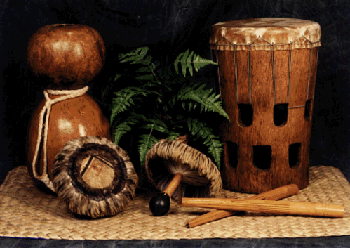
Our language, the most important facet of our culture, is being threatened with extinction and as a columnist for the Maui News Lynne Horner recently said, "The language of these islands is looking extinction in the eye, and if the language of Hawaii goes, so does its culture and that's a fact." A recent survey was made and it was found that there are approximately 2,000 people in Hawaii who are fluent in Hawaiian and most of them live on Niihau and a majority of them are upwards of 80 years old. In recent years, efforts have been made by Hawaiian Scholars and parents who saw the need for their children to learn the language of these islands. They started da pre-school Punana Leo, a privately funded program and under the Department of Education, the Hawaiian Emersion Program. The D.O.E. Hawaiian Immersion Program starts from kindergarten and the child learns everything in the Hawaiian Language. When they enter the 5th grade, they are taught English and by the 6th grade they are bilingual and have caught up everything in English. My grandson Uluwehiokalani Maxwell, has attended the Kula Kaiapuni Hawaiian Immersion Program for the last 6 years and will be entering 7th grade. A lot of effort on the parents and grandparents has to be given in support of making a child totally bilingual for preparation in entering the English speaking society we live in. If we would get support from the D.O.E., the Governor and Legislature, this program would be a total success.
Because of the rapid growth of development within our islands, the physical evidence of our past culture is in danger of being obliterated by clearing vast amounts of raw land that contains burials, house sites, heiau (temples) and other important physical links to our past history. Recent laws have been passed that protect burials that are found when construction occurs. Burial Councils were formed on each island and when a burial is discovered, the council makes a determination on its deposition. Some archeologists and developers are continuously trying to circumvent the law, so they can develop every available space on the islands.
The area of our culture that needs immediate attention is what might be the most important, "The Aloha Spirit." It is by no means lost and is still being practiced among us today. The problem it seems is understanding first of all what is the "Aloha Spirit." The answer is in the word, "Aloha" which in itself means love, caring, sharing and a whole lot of things. One cannot receive the "Aloha Spirit" without returning the gesture either to the giver or to some other person who requires it. The "Aloha Spirit" is not a commodity; it cannot be bottled and sold in the streets of Lahaina and Waikiki. It has to be practiced by everyone in order for it to survive into the 21st Century.
From 1957 to 1969, I was a tour guide here on Maui. We used to have only 7 passengers in our tour cars and went up to Haleakala, Iao Valley, and back to the Airport. Lahaina was not a tour "destination." We used to make large amounts of tips, much more than today (per capita) because we took the time to explain everything to tourists. We shared everything with them: our upbringing, family stories, we even stopped to let them smell the flowers on the highway. For them and us, it was a real personal experience. If we plan to continuously bring visitors to these shores, then maybe it's time to reassess the quality of what we have to offer and concentrate on how we truly teach them what the "Aloha Spirit" is all about, by displaying it in our actions and deeds. The new residents and tourists to come to these shores must realize that these islands are not "anywhere U.S.A." We have been a state for a mere 37 years and be a sovereign Nation for 1500 years. The Kanaka Maoli, or Native Hawaiian, are the only group of people that connect culturally and spiritually to these islands. Every valley, mountain, ocean, and stream is named with a story to go with it. We as a native people have prior rights to our ancestral lands and this we intend to keep.
By spreading our aloha and sharing it with the rest of the world (which we have been doing since Capt. Cook arrived), and making the "Aloha Spirit" contagious, we can again fully enjoy this experience that was common place to Ka Po`e Kahiko, The People of Old......
Return